Anthropology of Religion: Essential Concepts for Reading Comprehension
📋 Overview
The anthropology of religion explores the cultural, social, and symbolic dimensions of religious beliefs
and practices. By examining rituals, myths, and sacred symbols, it highlights how religion shapes and
reflects human societies. RC passages on this topic often analyze how different cultures interpret the
divine, manage transitions through rites, or adapt religious practices over time. Understanding these
concepts enables readers to critically engage with diverse religious phenomena and their sociocultural
implications.
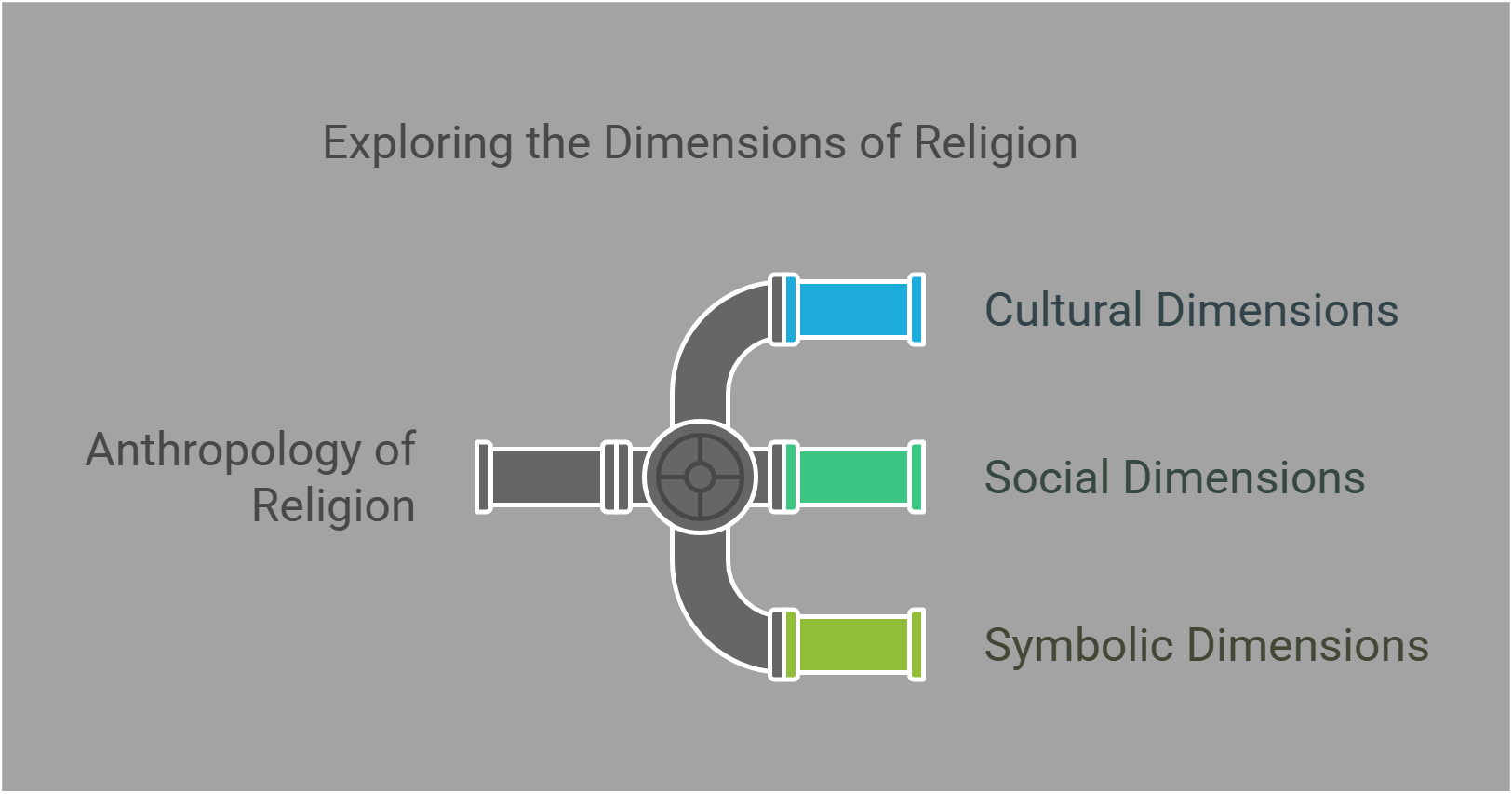
🔑 Key Concepts
This guide explores the following essential concepts in the anthropology of religion:
- 1. Totemism
- 2. Animism
- 3. Sacred vs. Profane
- 4. Shamanism
- 5. Syncretism
- 6. Pilgrimage
- 7. Secularization
- 8. Rites of Passage
- 9. Myth vs. Ritual
- 10. Symbolism in Religion
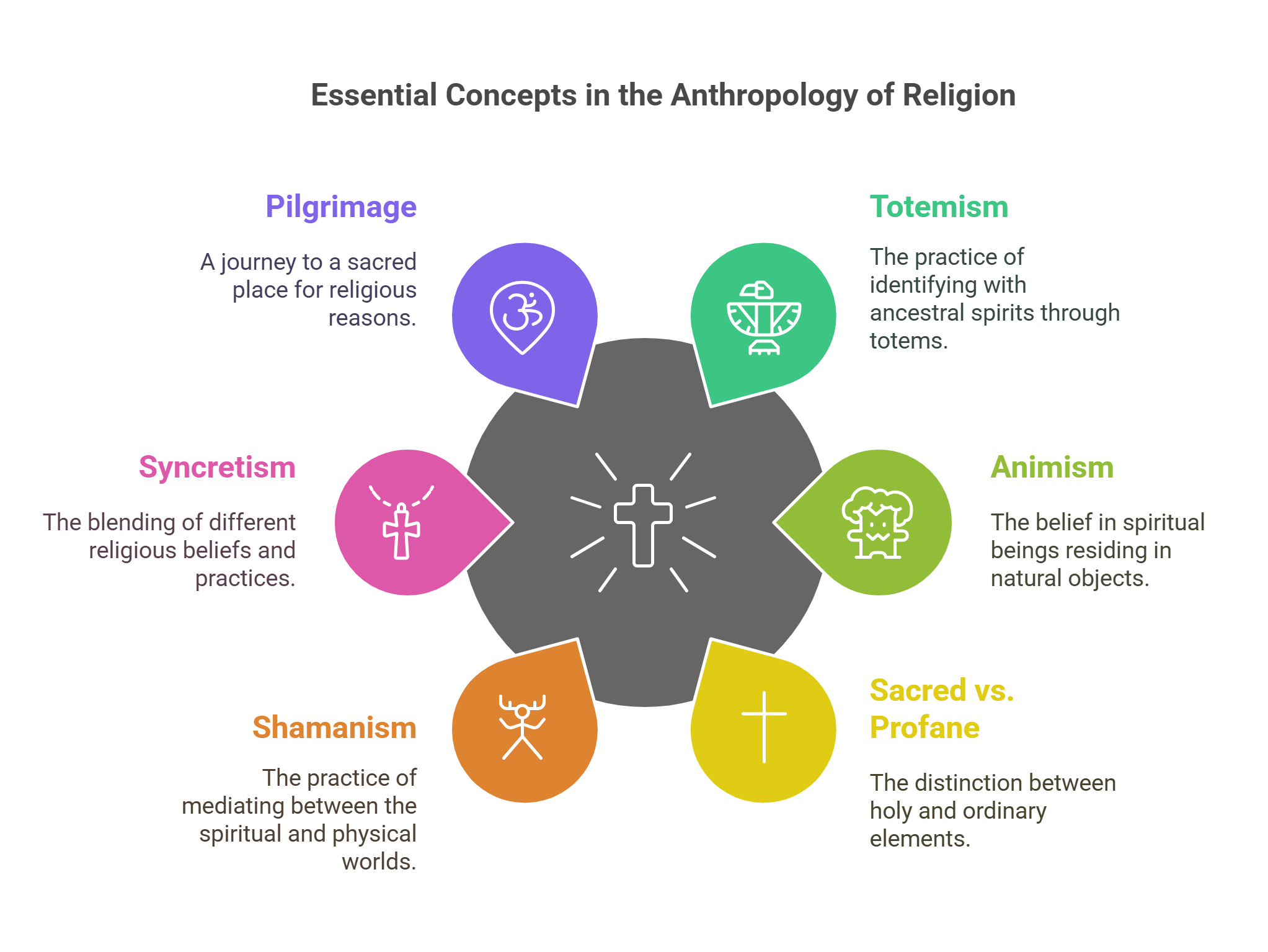
1. Totemism
Detailed Explanation: Totemism refers to a belief system in which humans have a spiritual
connection or kinship with a particular animal, plant, or natural object, known as a totem. This totem often
symbolizes the unity and identity of a group, such as a clan or tribe.
- Key Features:
- Totems are considered sacred and may be involved in rituals.
- They represent shared ancestry or collective identity.
- Applications:
- Studying totemism helps understand early human societies and their symbolic worldviews.
📘 Example: The totem poles of Native American tribes in the Pacific Northwest represent
clan lineage and spiritual beliefs.
Explained Simply: Totemism is like a family crest, symbolizing both identity and shared heritage.
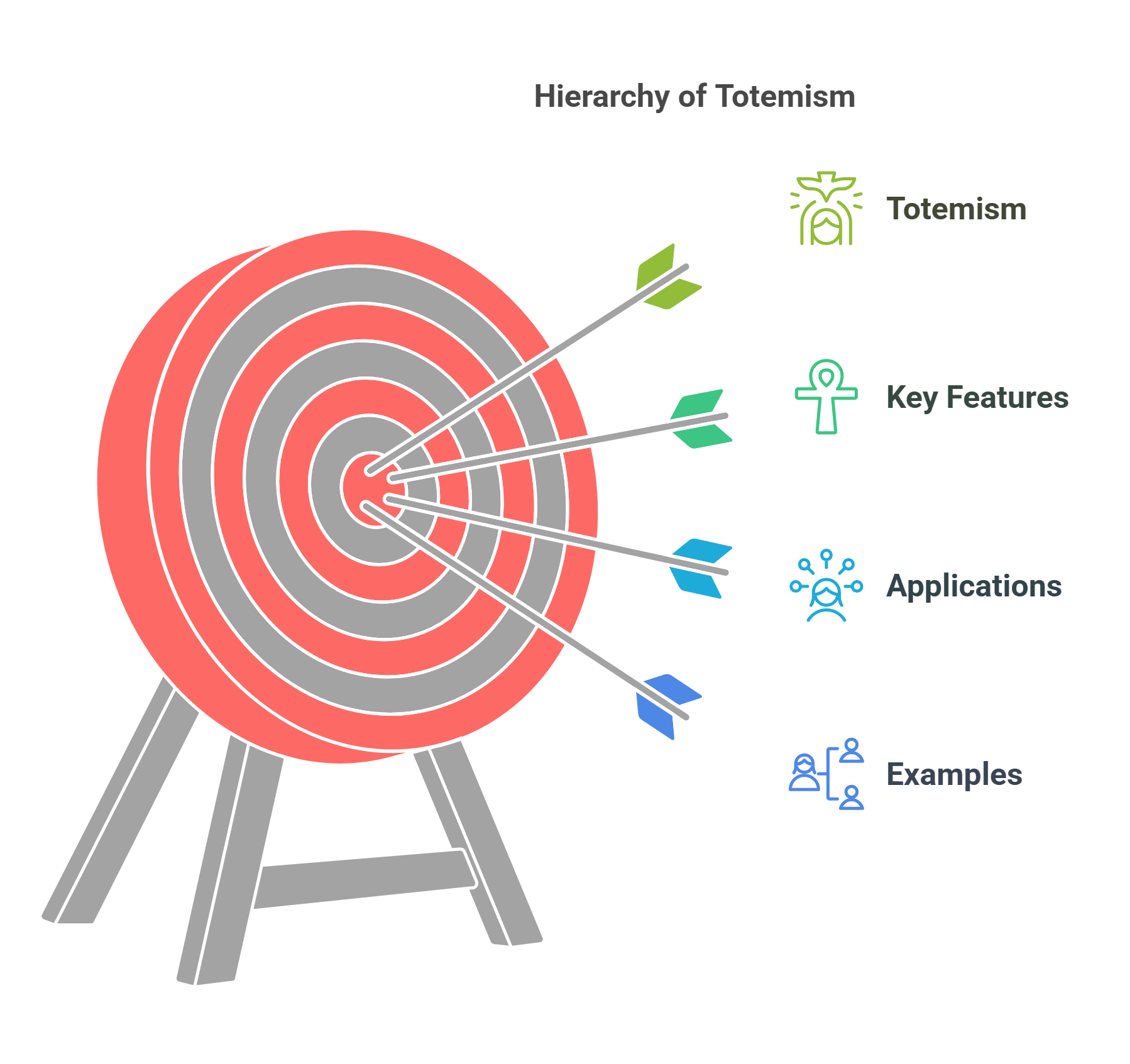
2. Animism
Detailed Explanation: Animism is the belief that spirits or consciousness inhabit natural
objects, such as trees, rivers, or mountains. This worldview perceives the natural world as alive and
interconnected with humanity.
- Key Aspects:
- Found in many indigenous religions.
- Spirits may be benevolent, malevolent, or neutral.
- Applications:
- Understanding animism offers insights into ecological ethics and traditional environmental stewardship.
📘 Example: Many Indigenous Australian groups view the land as imbued with ancestral spirits.
Explained Simply: Animism is like seeing every part of nature as a living, breathing entity
with its own story.
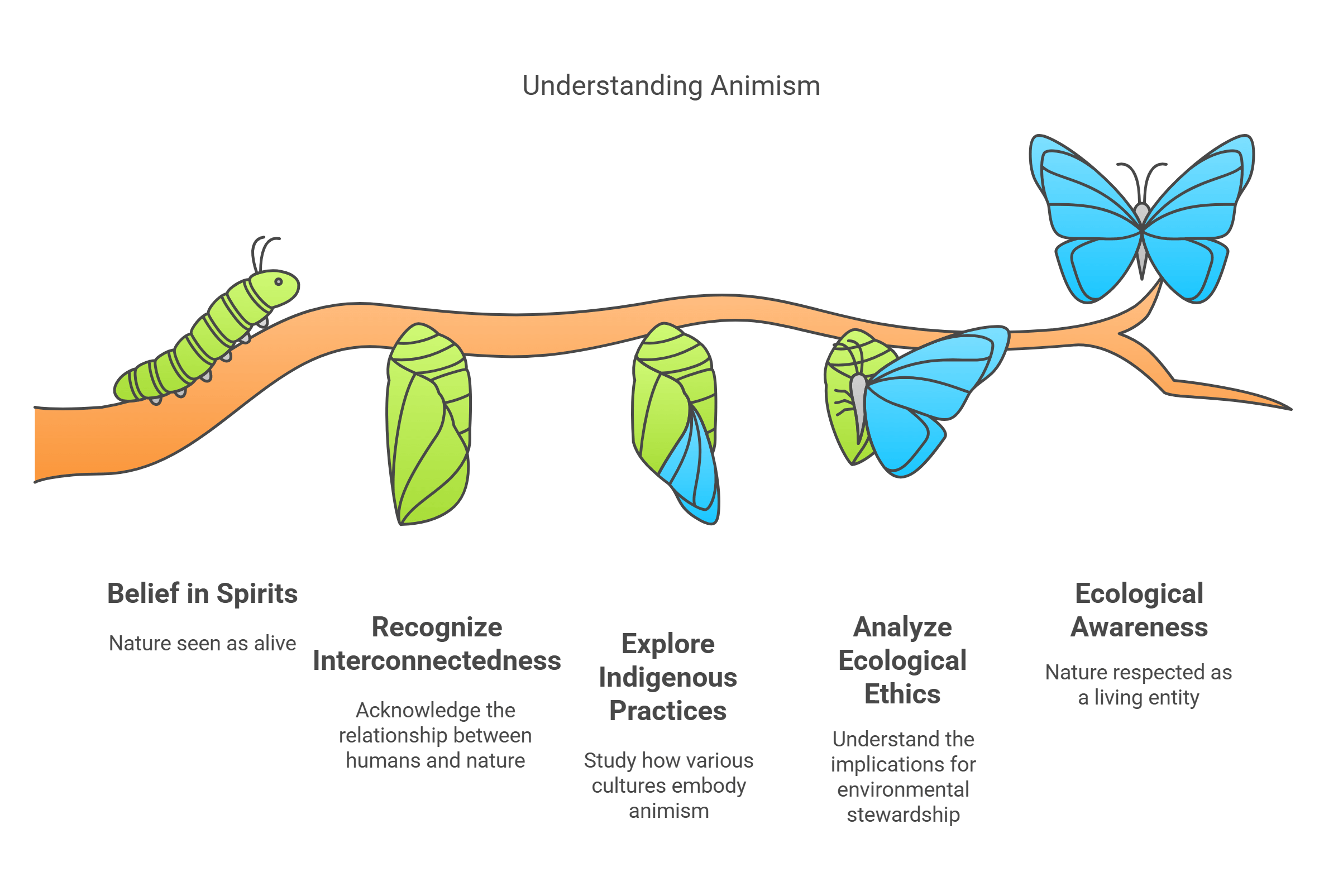
3. Sacred vs. Profane
Detailed Explanation: Proposed by Émile Durkheim, the distinction between the sacred and the
profane is foundational in understanding religion. Sacred refers to things set apart as holy, revered, or
significant, while profane encompasses the ordinary, mundane aspects of life.
- Key Features:
- Sacred elements are protected by rituals and taboos.
- The profane represents everyday experiences.
📘 Example: A church is considered sacred, while a marketplace is profane.
Explained Simply: The sacred is like a spotlight in a dark room—it stands out, inspiring awe
and respect.
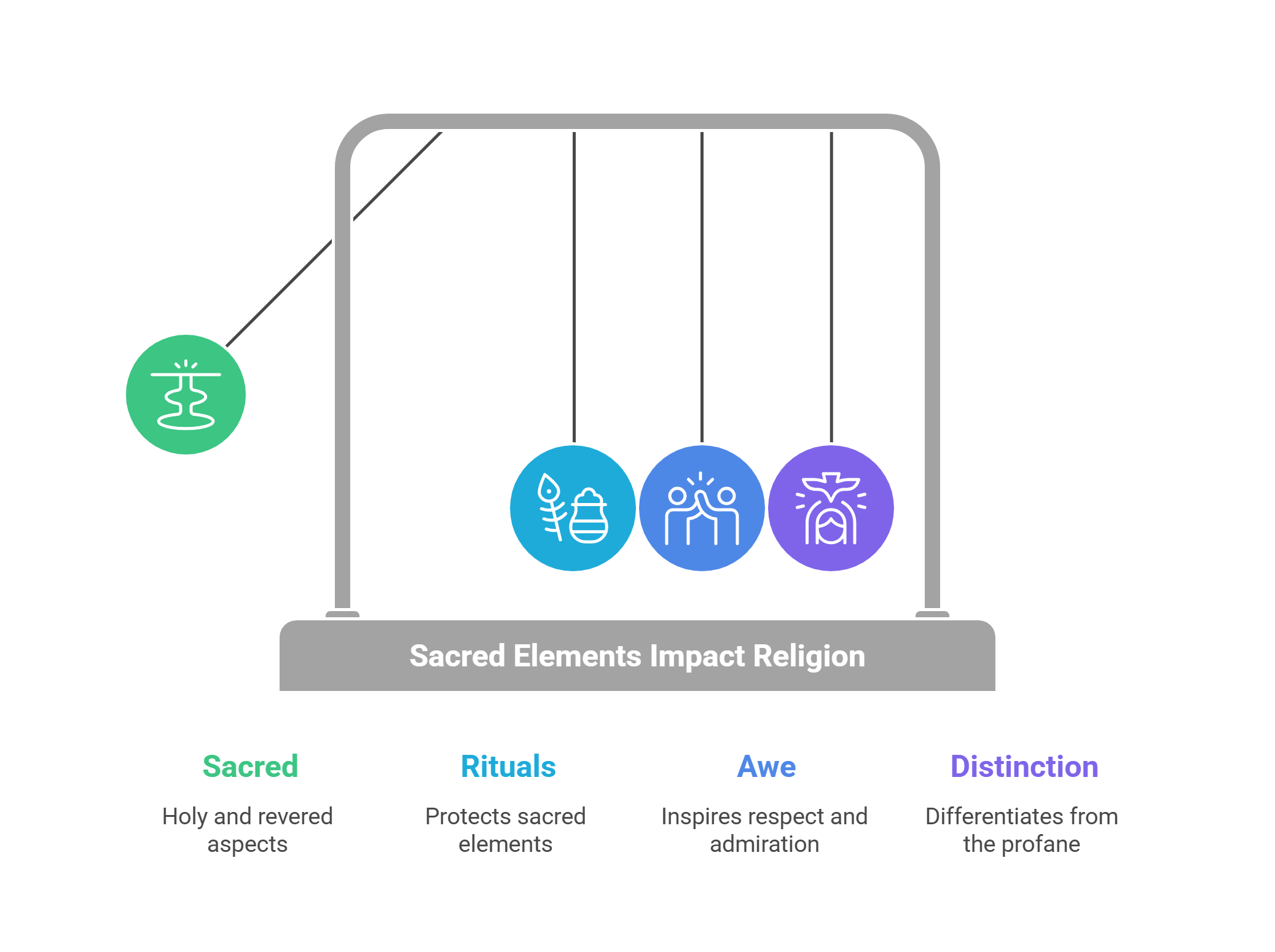
4. Shamanism
Detailed Explanation: Shamanism is a spiritual practice in which a shaman—a mediator between
the human and spirit worlds—uses rituals and altered states of consciousness to heal, guide, or perform
divination.
- Key Characteristics:
- Shamans often undergo rigorous training or initiation.
- They use tools like drums, chants, or hallucinogenic substances.
- Applications:
- Studying shamanism reveals how societies manage healing and spiritual guidance.
📘 Example: Siberian shamans communicate with spirits to restore balance in the community.
Explained Simply: Shamanism is like having a spiritual translator who bridges the human and
divine realms.
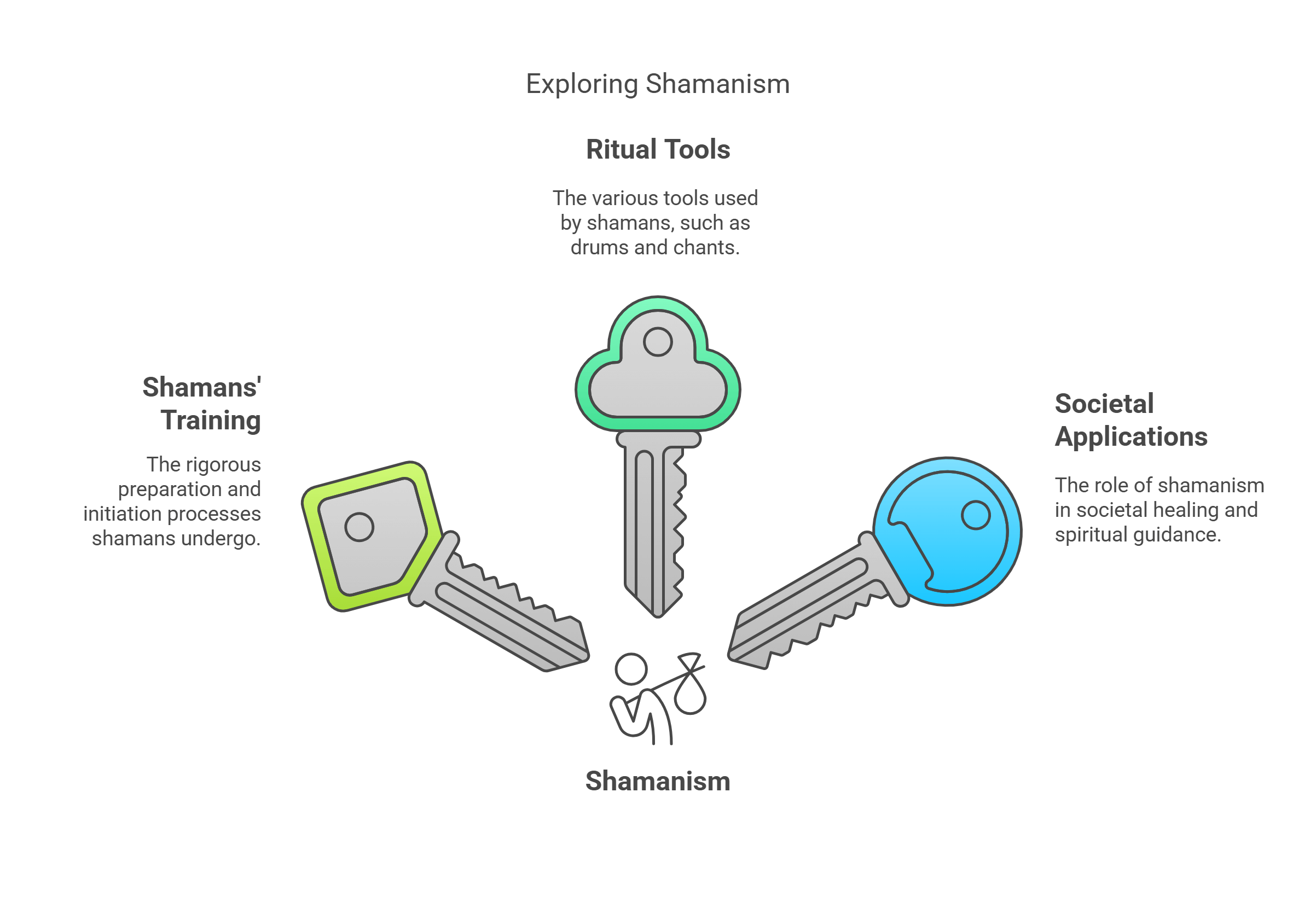
5. Syncretism
Detailed Explanation: Syncretism refers to the blending of different religious traditions,
beliefs, or practices, often resulting from cultural contact or colonization. It showcases how religions adapt
and evolve in diverse contexts.
- Key Features:
- Combines elements of indigenous and introduced religions.
- Often creates hybrid spiritual practices.
- Examples:
- Voodoo, which blends West African traditions with Catholicism.
- The Mexican Day of the Dead, merging Aztec and Catholic rituals.
Explained Simply: Syncretism is like mixing colors on a palette, creating new shades while
preserving traces of the originals.
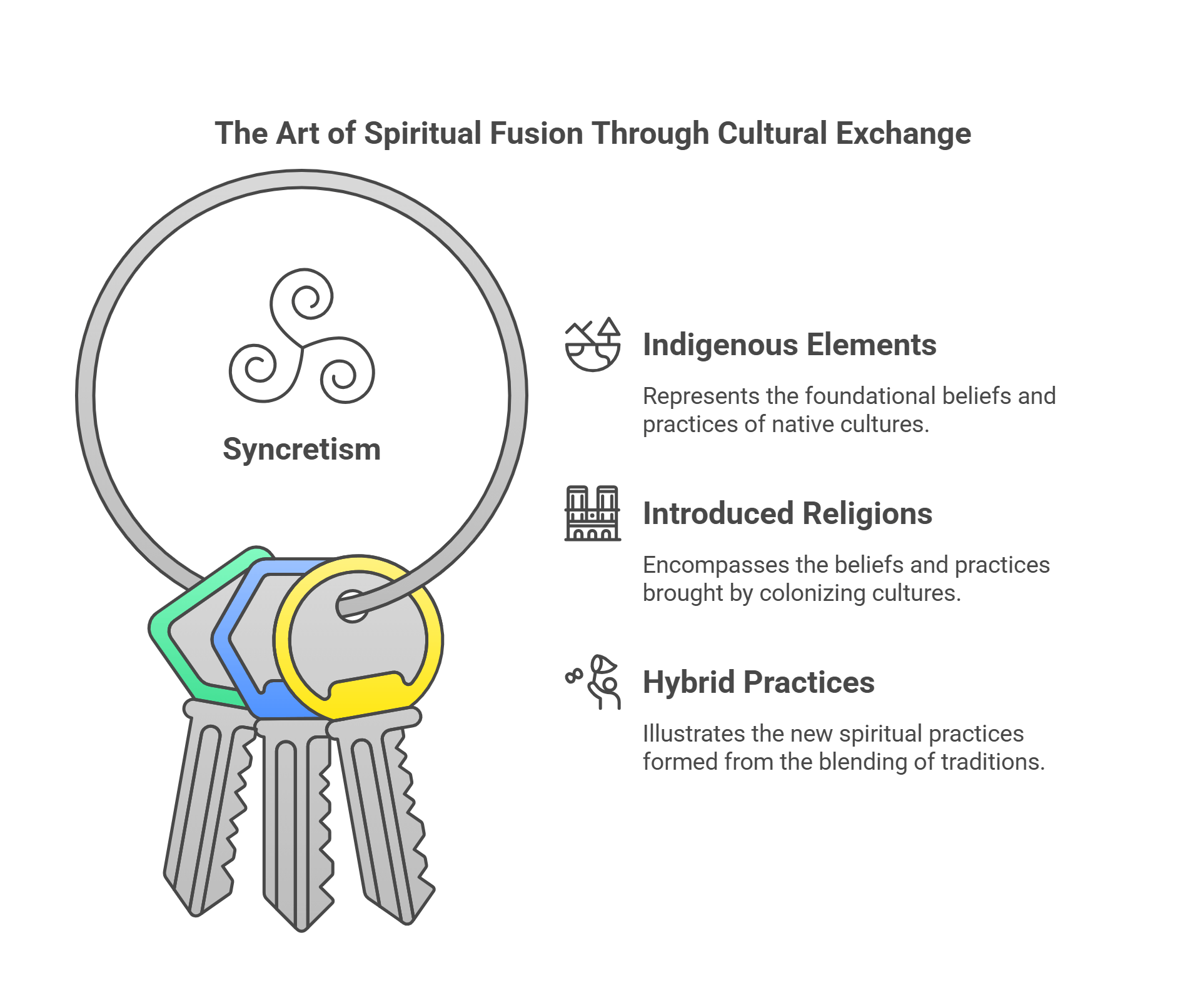
6. Pilgrimage
Detailed Explanation: A pilgrimage is a journey to a sacred site undertaken for spiritual growth,
devotion, or penance. Pilgrimages often symbolize personal transformation or communal religious expression.
- Key Aspects:
- May involve rituals, prayers, or fasting along the way.
- Pilgrimages reinforce faith and cultural identity.
- Examples:
- The Hajj, an Islamic pilgrimage to Mecca.
- The Camino de Santiago, a Christian pilgrimage in Spain.
Explained Simply: A pilgrimage is like a spiritual road trip, where the journey and destination both hold
profound meaning.
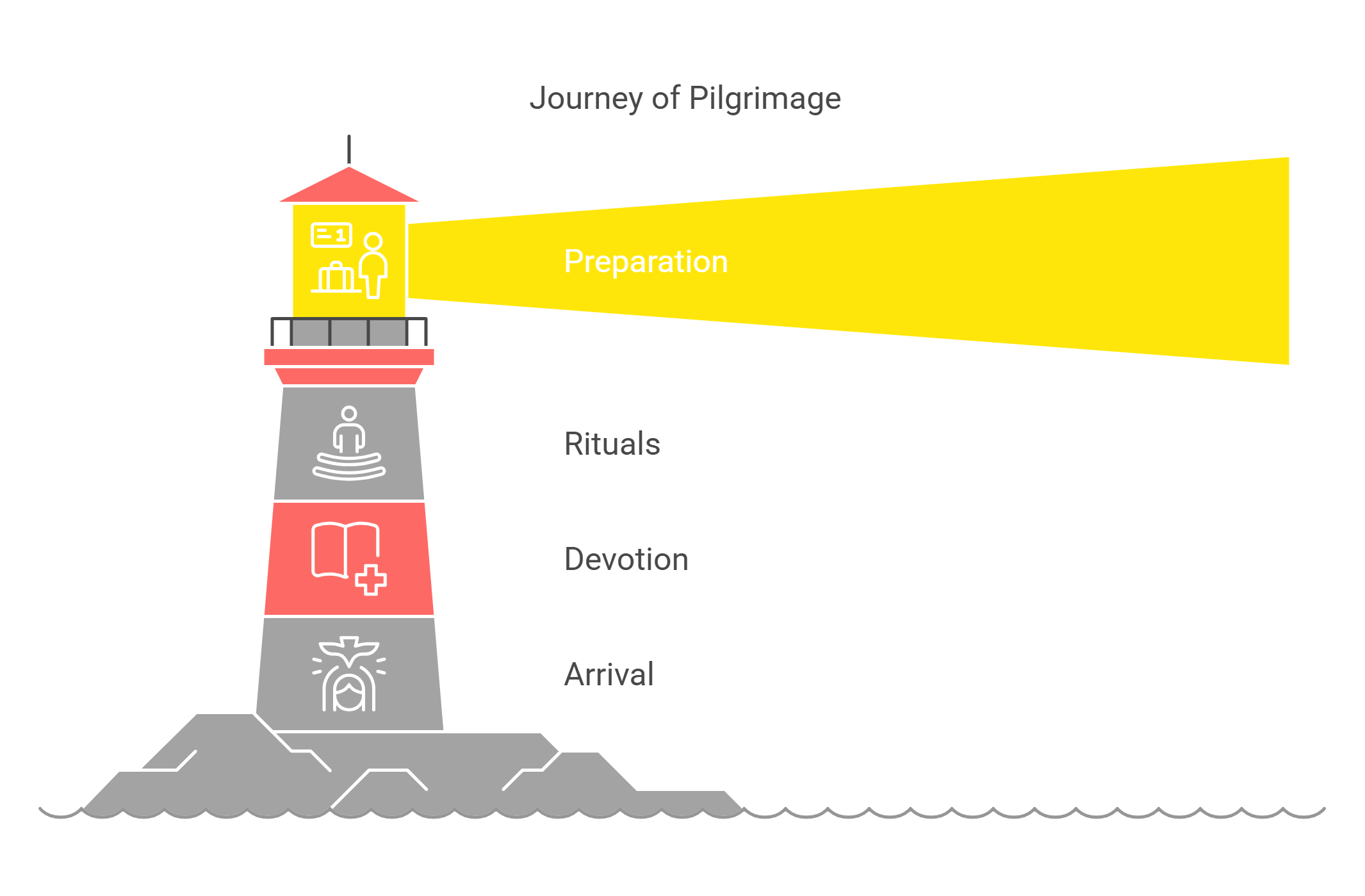
7. Secularization
Detailed Explanation: Secularization is the process by which religion loses its influence over
societal institutions and individuals. It often accompanies modernization and scientific advancement.
- Key Features:
- Decline in church attendance and religious affiliation.
- Rise of secular values, such as individualism and rationality.
- Applications:
- Studying secularization helps understand shifts in cultural and moral frameworks.
📘 Example: The increasing emphasis on scientific explanations over religious doctrines in contemporary
education systems.
Explained Simply: Secularization is like turning down the volume on religion in public and private life.
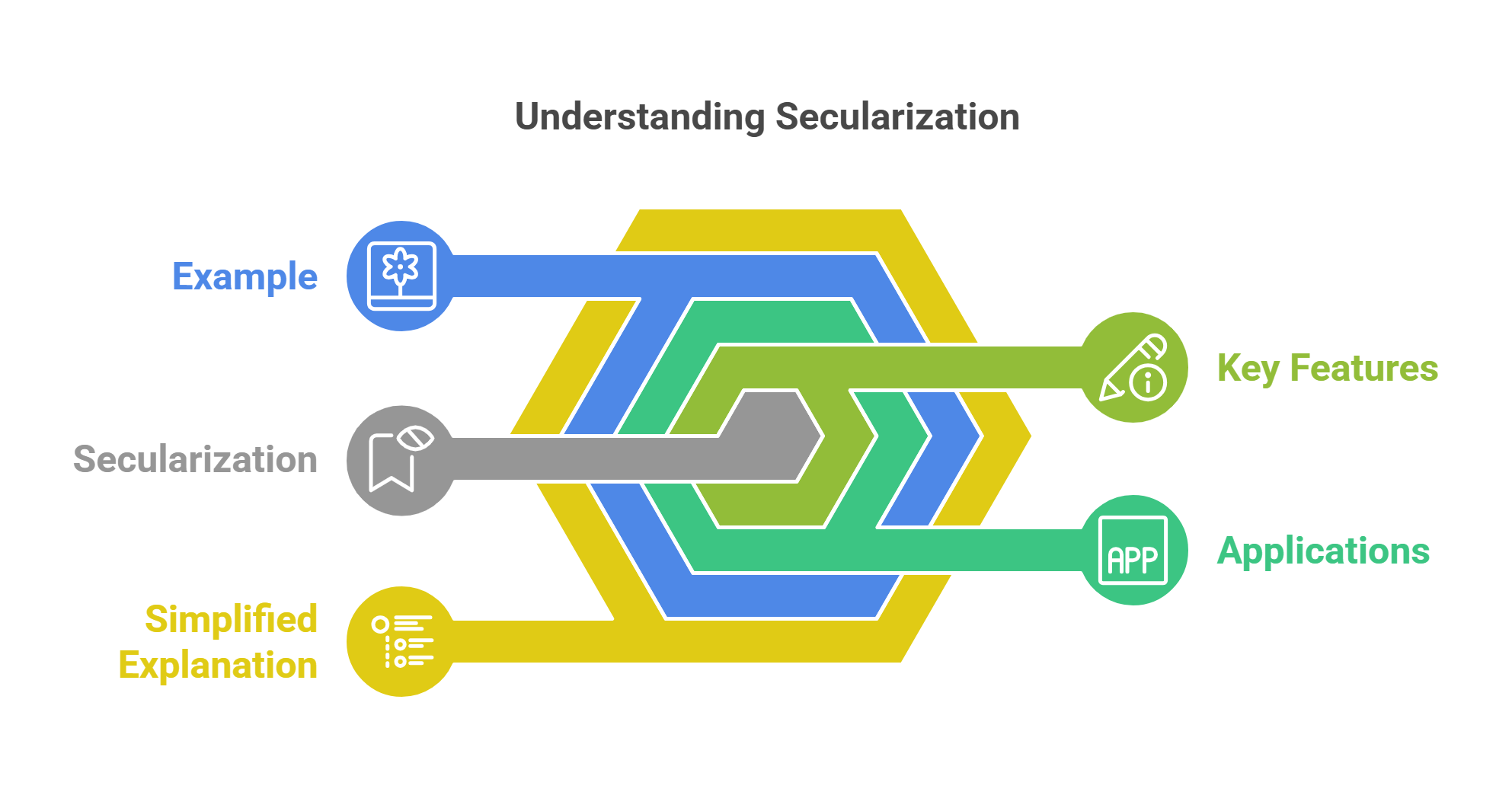
8. Rites of Passage
Detailed Explanation: Rites of passage are ceremonies marking significant life transitions, such as birth,
coming of age, marriage, or death. These rituals often signify a change in status within a community.
- Phases:
- Separation: Leaving the previous stage.
- Liminality: A transitional period of uncertainty or transformation.
- Incorporation: Entering the new stage with recognition.
- Applications:
- Understanding these rituals provides insight into social organization and cultural values.
📘 Example: Bar Mitzvahs in Judaism celebrate the transition from childhood to adulthood.
Explained Simply: Rites of passage are like bridges, guiding individuals from one life stage to the next.
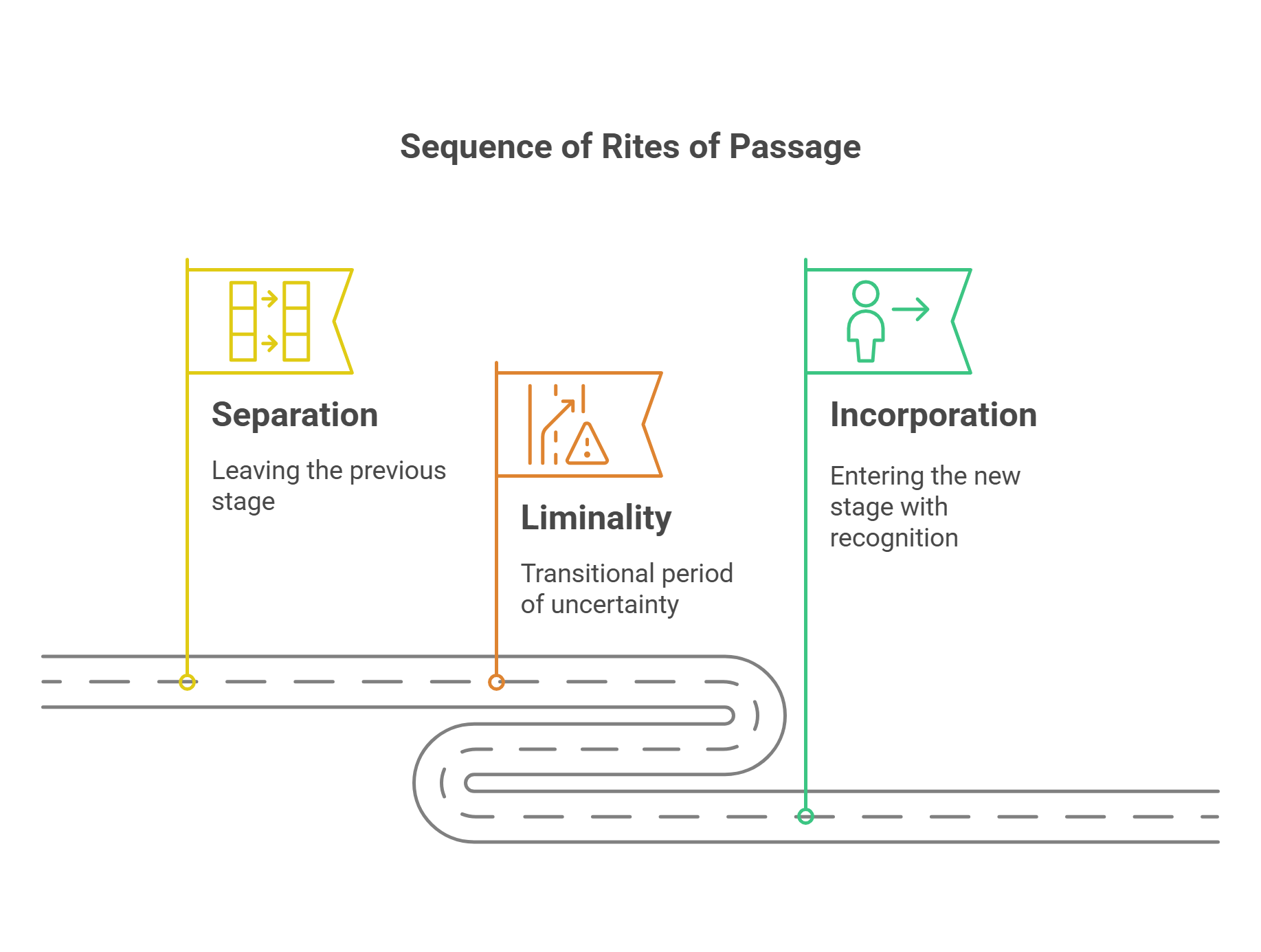
9. Myth vs. Ritual
Detailed Explanation:
- Myth: Narratives that explain the origins, values, or cosmologies of a culture.
- Ritual: Structured practices that enact the beliefs conveyed in myths.
Key Relationship: Myths provide the narrative framework, while rituals bring these stories to life through
action.
- Examples:
- The myth of Persephone and Demeter explains the seasons, while rituals honor fertility cycles.
- In Christianity, the myth of the Last Supper is enacted through the ritual of Communion.
Explained Simply: Myths are like scripts, and rituals are the performances that bring them to life.
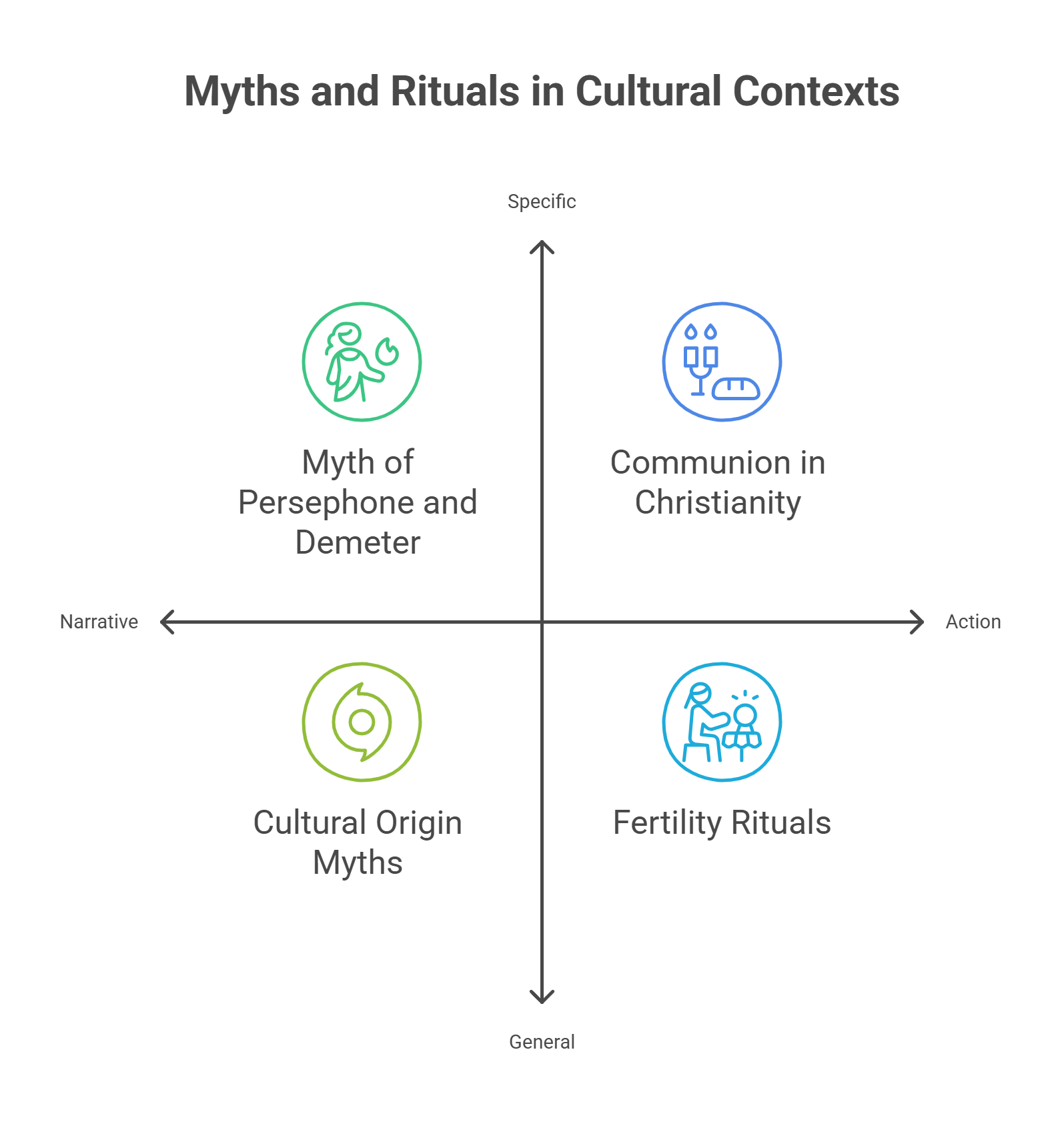
10. Symbolism in Religion
Detailed Explanation: Religious symbols represent abstract ideas, beliefs, or sacred concepts. They serve
as tools for communication, worship, and identity.
- Types of Symbols:
- Objects (e.g., the cross in Christianity).
- Actions (e.g., bowing in prayer).
- Colors or images with spiritual significance.
- Applications:
- Studying symbols uncovers deeper meanings within religious practices.
📘 Example: The lotus in Buddhism symbolizes purity and enlightenment.
Explained Simply: Religious symbols are like keys, unlocking deeper layers of meaning in spiritual
practices.
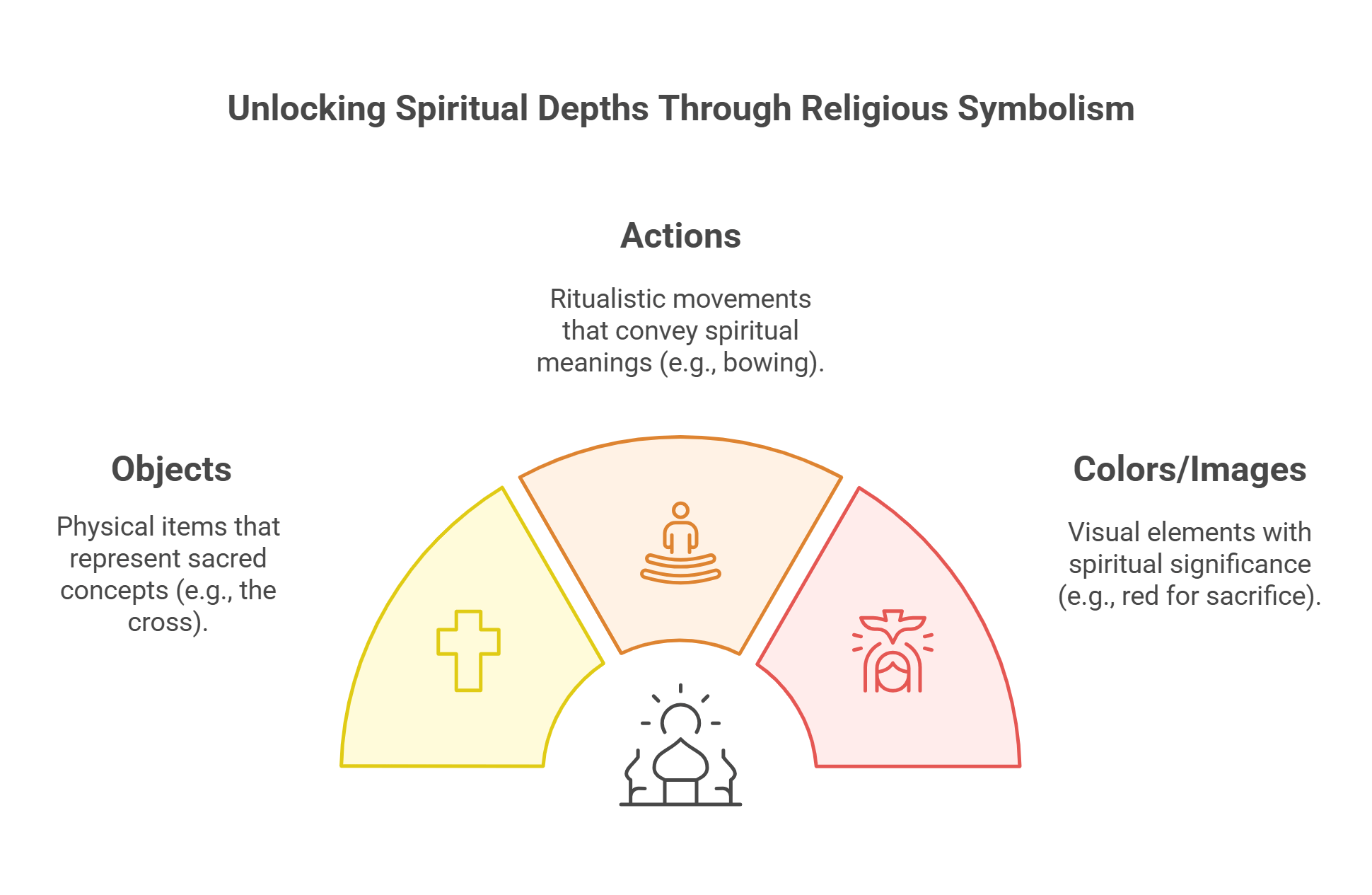
✨ Conclusion
The anthropology of religion provides a window into how humans create meaning, manage transitions, and connect with the
divine. By understanding concepts like totemism, rites of passage, and symbolism, readers can better analyze RC passages
and appreciate the diversity of religious traditions. This field reveals the profound ways in which religion shapes
cultural identity and societal structures.










